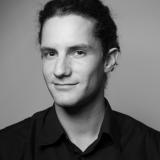Researchers in Germany use AI to map urban heat stress in detail
Clean Energy Wire
A new AI-based modelling system allows urban planners to get a detailed view of heat stress in Germany’s cities, offering more granular approaches to climate adaptation solutions. The system developed by researchers from the University of Freiburg and the Karlsruhe Institute of Technology calculates heat development in densely populated and heavily developed inner cities down to a square meter by combining geodata, such as the buildings’ height and vegetation cover, with weather forecasts and other climate data.
Freiburg, a city in southern Germany, served as the model’s testing ground: “Our AI model allows us to analyse the heat development in front of virtually every door in Freiburg,” said Andreas Christen, environmental meteorologist at the University of Freiburg. The model could be applied to every other city, Christen said, adding that this would allow them to develop tailor-made adaptation and heat protection solutions.
“Factors such as building density, vegetation, and air circulation decide whether an area remains relatively cool or whether extreme heat accumulates there,” added KIT researcher Ferdinand Briegel. Especially industrial zones, which often lack vegetation and have a high degree of surface sealing, could be seeing a drastic increase in heat stress, the researchers found. For the city of Freiburg as a whole, the analysed scenarios included a worst-case in which the number of hours with extreme heat stress (above 38 degrees Celsius) in the city increased tenfold to 71 hours in the period 2070 to 2099. This compares to only seven hours during the reference period from 1990 to 2019.
Recurring heat waves have raised awareness across Europe in recent years that climate change could quickly impact quality of life and that adaptation measures, alongside emissions reduction, are necessary to adequately respond to global warming. Healthcare industry associations, for example, recently called for more money for heat protection in hospitals and nursing homes in Germany, as average temperatures continue to rise and current protections are no longer adequate.

